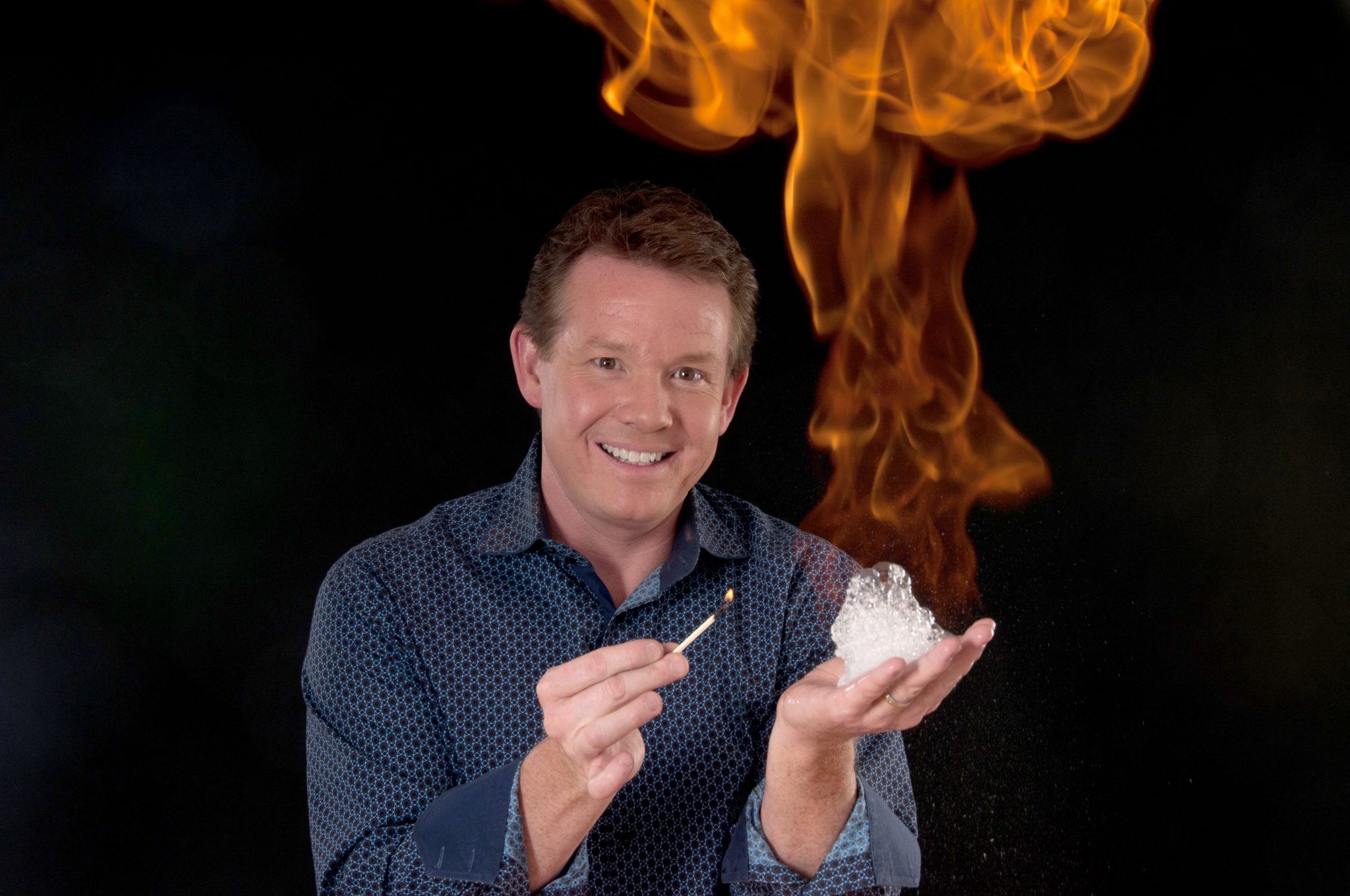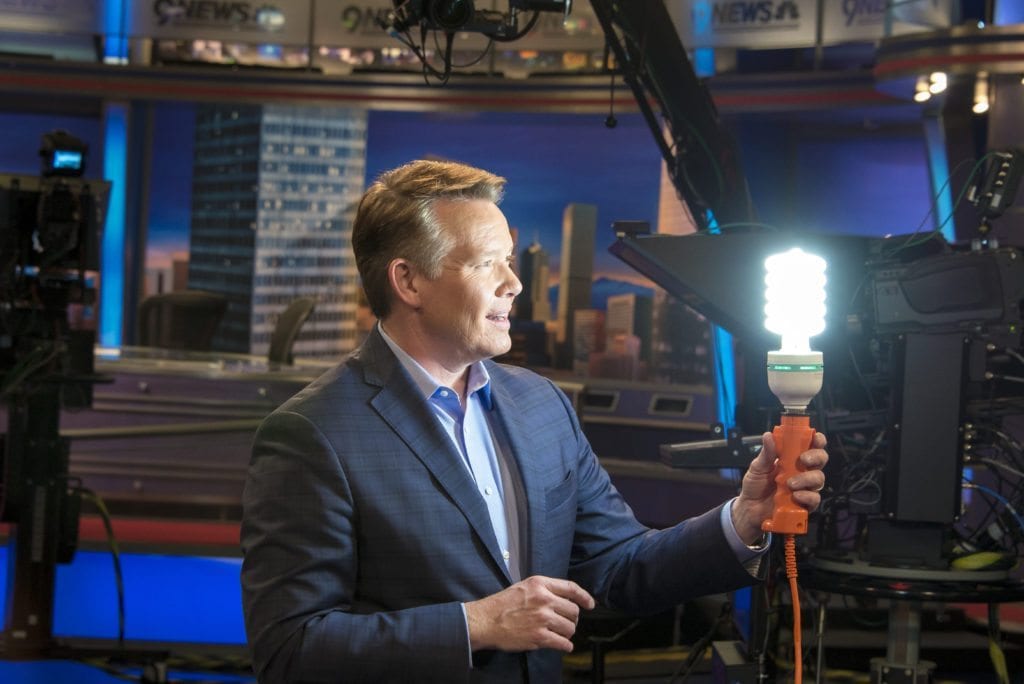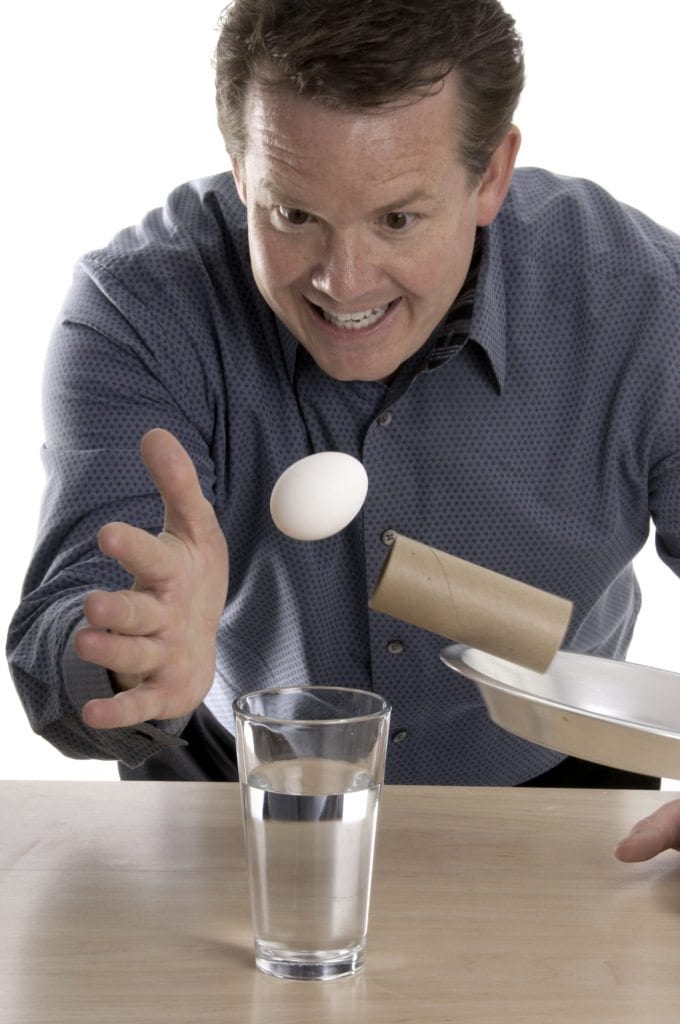Remember when putting Mentos in soda bottles was all the rage on YouTube? Steve Spangler was the scientist behind it. You may have also seen Spangler blowing things up, toilet papering an audience, or otherwise engaged in science-based shenanigans on Ellen. Dubbed ‘America’s Science Teacher’ by the TV show host, Spangler is committed to training other science teachers through speaking engagements; his workshop, Science in the Rockies; and more. Spangler is excited to take the stage at the 2016 USA Science & Engineering Festival. “I have a feeling there will probably be some flying rings of smoke, some flying potatoes, and giant balloons,” he said. “People will want to get out their phones and take pictures!”
Innovation & Tech Today: What are your thoughts on the STEM movement?
Steve Spangler: I have a little bit of a different view about STEM. There are people coming out of the woodwork who are asking some pretty tough questions, so that forced me to do some soul-searching and a little bit of research to find out where this push even came from.
I’ve seen some negative consequences and some positive results, but I’ve had a revelation. When you actually to go the people who are funding STEM right now and asking them what they want, it’s very, very different from what we as educators are putting out. And that’s where we’re going to get into trouble.
I&T Today: What did you learn about the roots of STEM?
SS: Well, I started in education in 1990 at the end of a movement called ‘Making Science Fun’. But the real problem with that focus is that kids already think science is fun! We had to convince the teachers, not the students.
From 1990-2003, I traveled around the country with the Science Assembly Program for schools. I did about 4500 school shows. I found a large number of teachers were not all that excited about teaching science. It was easier to bring in a science communicator, like me, or find money to go to a science museum for a field trip.
STEM is all about engaging the student to want to learn more. It’s all about seeing the invisible potential in our students that they themselves can’t see. This unlimited opportunity for a career as a scientist or engineer is so important that we don’t want to repeat what we were doing in the 90s.
I&T Today: How do we not repeat those mistakes?
SS: The way we can connect with kids and engage with kids is by reaching their hearts. Lots of teachers do activities, but the great teachers know how to take an activity and turn it into an unforgettable learning experience. My principal when I was teaching elementary school said to me early on, “If you want to create the best day ever for a student, just make sure that whatever you do gets from class to the dinner table. If it gets to the dinner table, you win.”
We have to add one more component to science, technology, engineering, and math because these aren’t enough to inspire kids to go out and sign up to be scientists or engineers. That’s where the next big learning piece came from. If you go to the CEOs of these corporations like Boeing or Lockheed Martin and ask, “Why are you investing millions of dollars in STEM?” Their answer is very, very simple. “We need scientists and engineers.”
That’s why I’m so excited to be a part of the USA Science & Engineering Festival. It’s an outward chance to be able to engage with people who may not have found their potential as a future scientist or engineer.
I think we see the focus on STEM must be more than just a cutesy little program which teachers don’t understand in the first place. We need to focus on how we can have more Sputnik moments or Top Gun moments. Did you know the Navy supported and sponsored and funded that movie? Do you know why? They needed more fighter pilots. And they got a whole wave of fighter pilots. Do you know why? They created an emotional connection. Those characters were heroes, and young kids were saying, “That’s what I want to be.” It’s hard work, but once my heart is set on it, I can do the hard work. But first, you have to convince my heart.
I firmly believe that’s what we do with these silly demonstrations people see us do on TV. It’s my job to create the most interesting and creative ways to make science fun. When it comes to STEM, that ‘A’ has to be in there. It’s not just for ‘art’; it’s ‘action.’ We have to move these kids to action.
I&T Today: How has technology changed education?
SS: As teachers, we were taught that we were a conduit through which the knowledge flows. That’s changed so much just in the last five years. We are no longer the content keepers. Our kids are smarter than we are in terms of access to content because all they have to do is reach into their pockets and ask Siri. We have to be idea facilitators.












